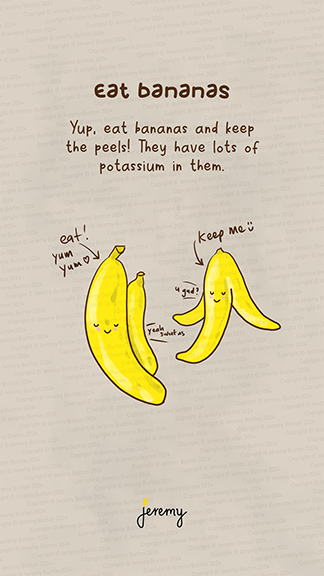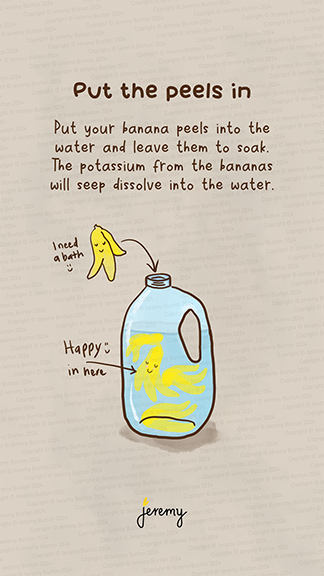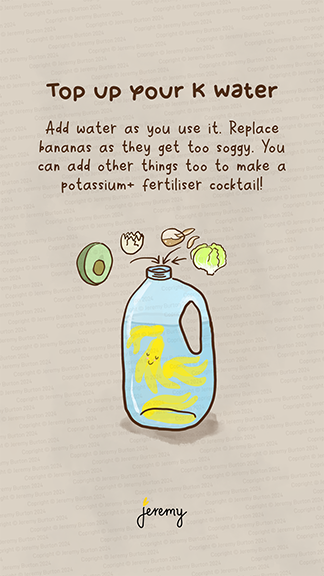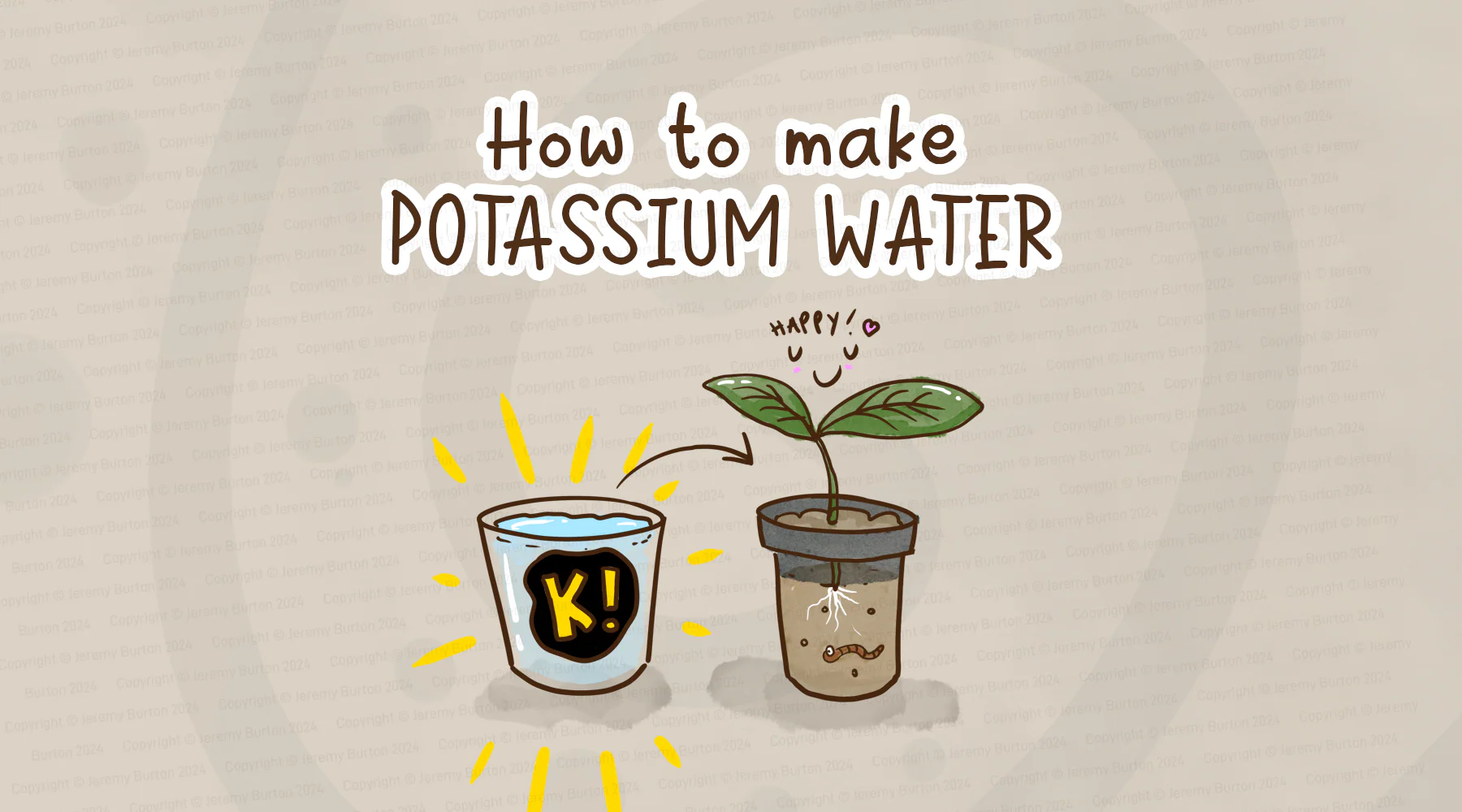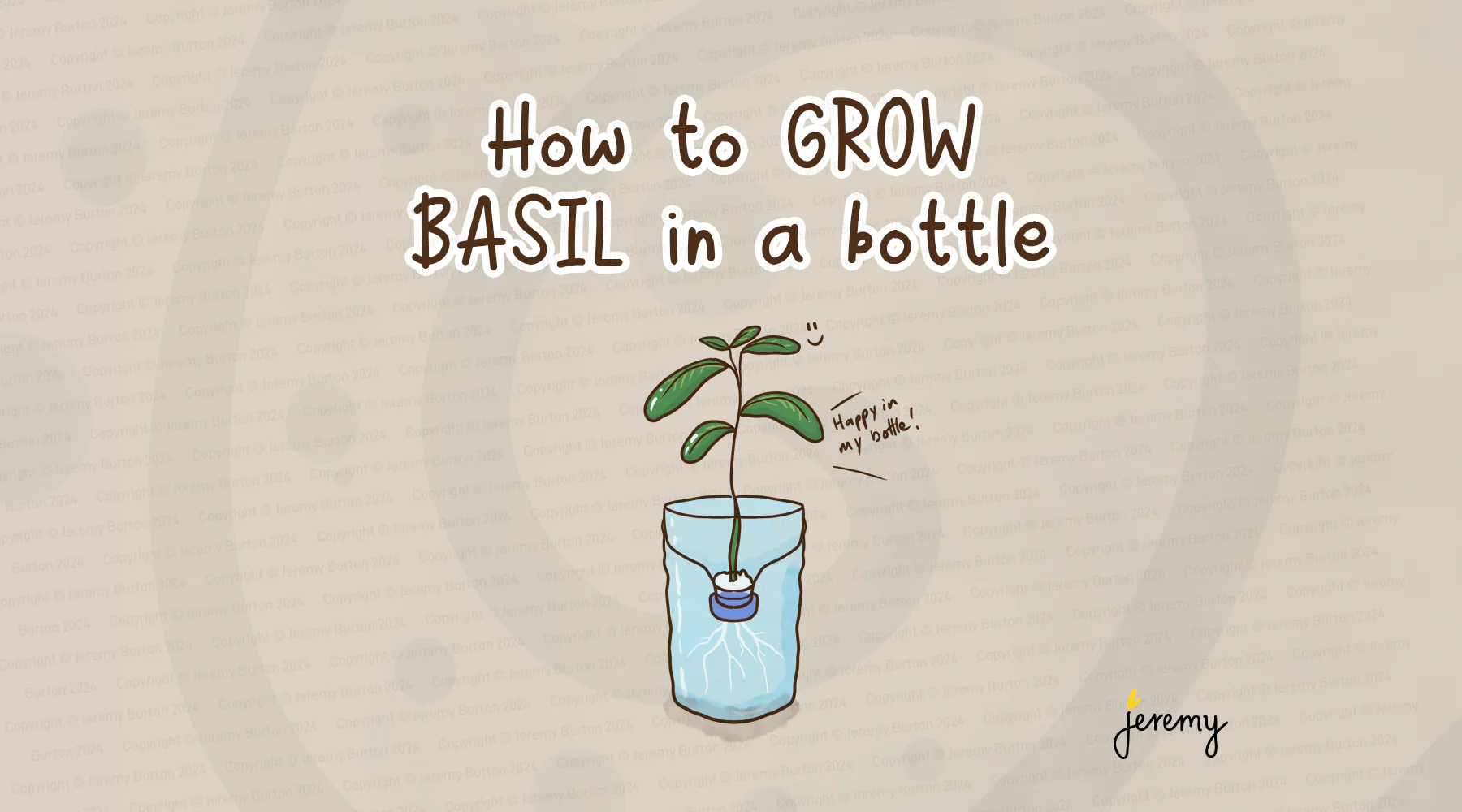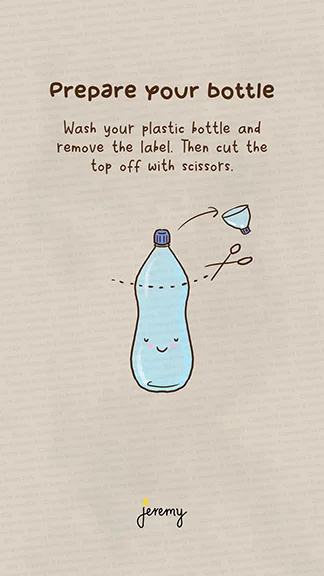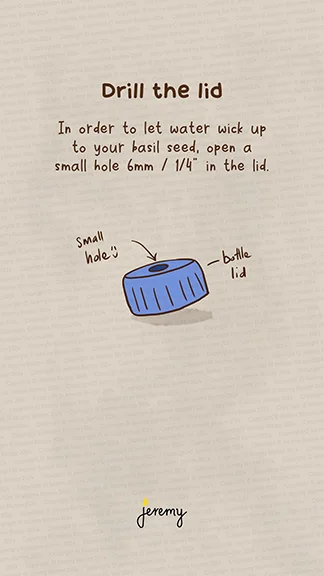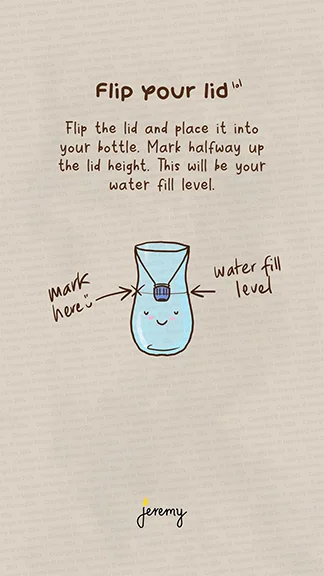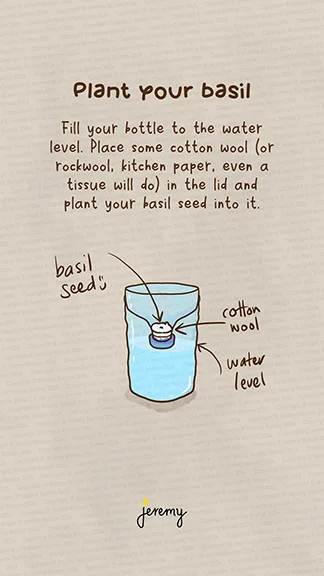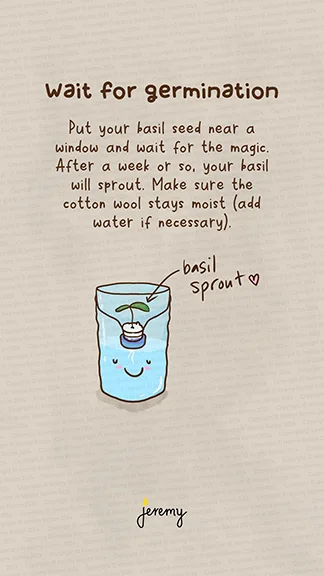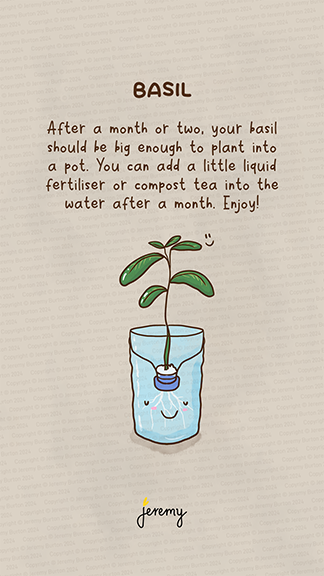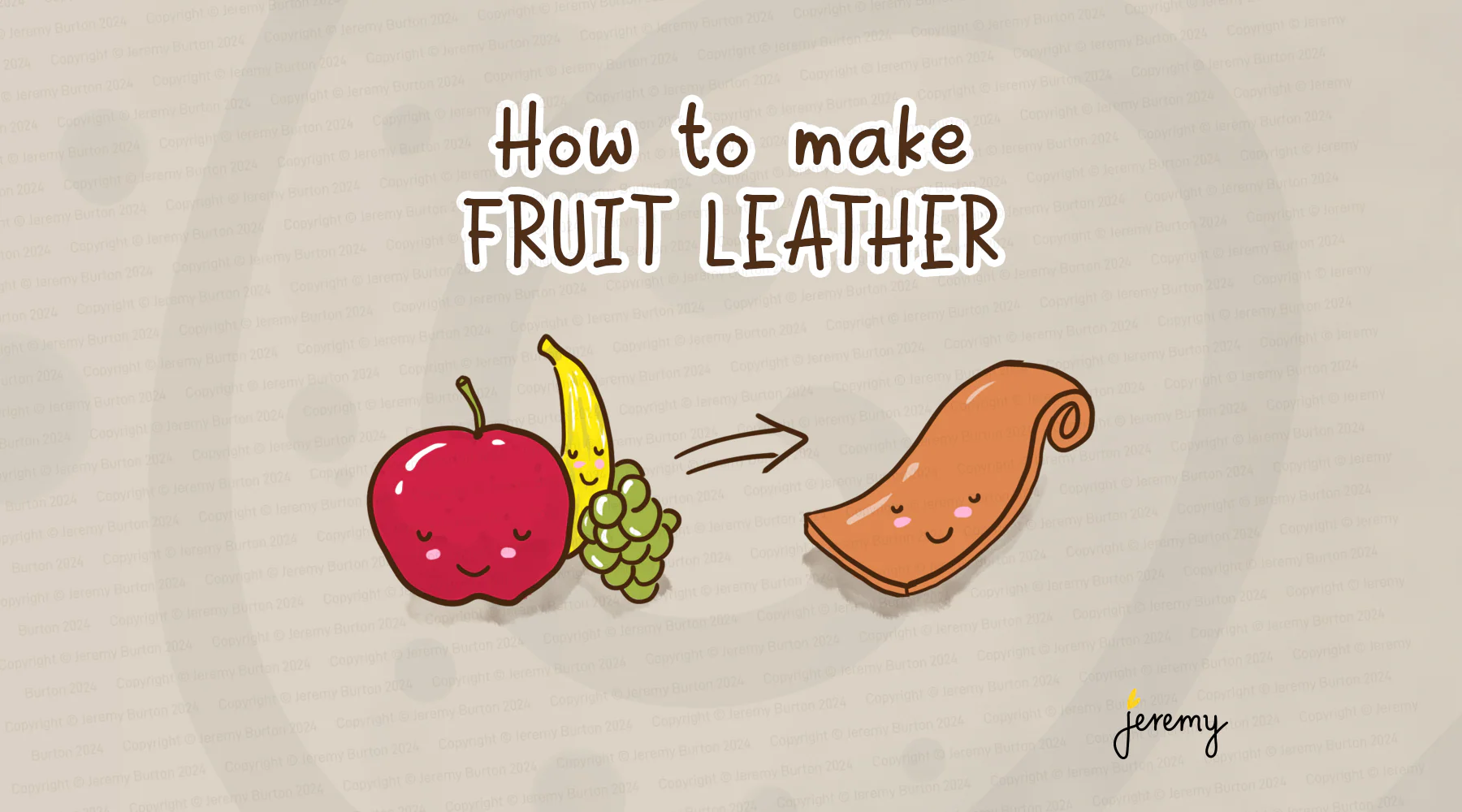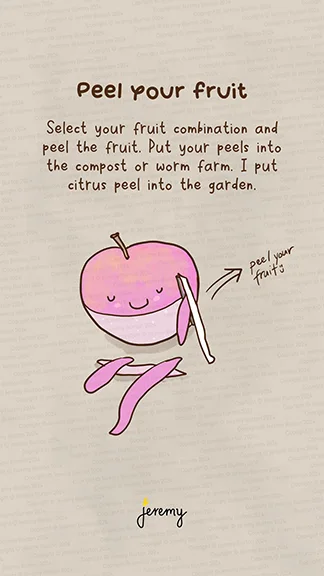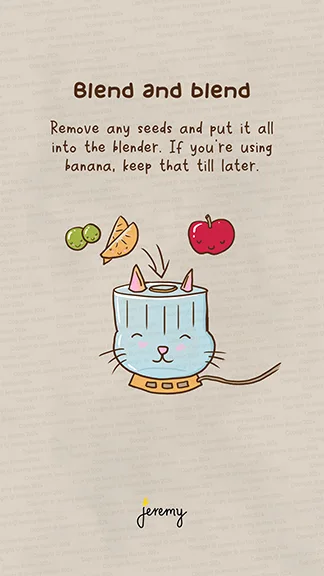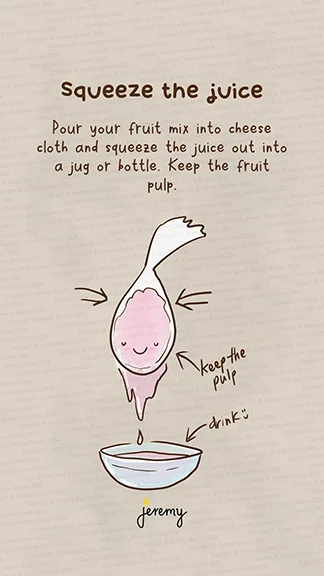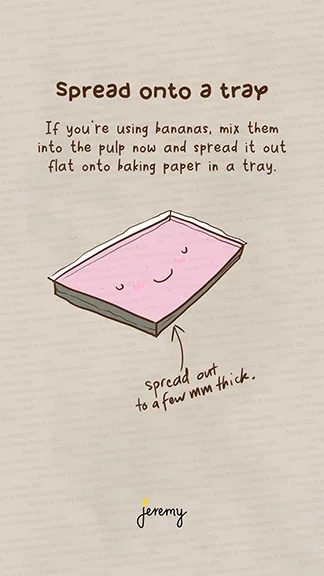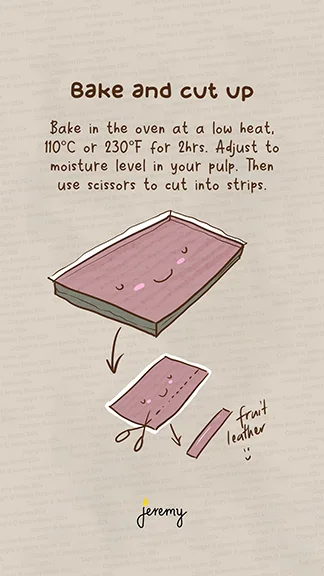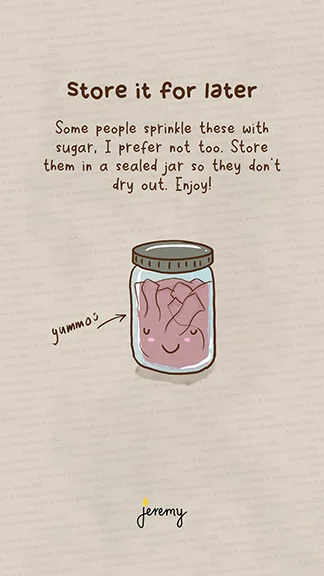Potassium water is a tea compost or liquid fertiliser you can make easily at home with kitchen or food scraps. Just throw the particular ingredients into water and let it steep. You can do this with any food scraps. Research what they’re made up and you can figure out a balanced fertiliser to match your plants.
In this case we’ll use banana skins, they have lots of potassium.
Get a container
An old milk bottle or water bottle will do. I use the old 2 ltr milk bottles.
Eat bananas
Eat your bananas and keep the peels. The fun bit!
Put the peels into your water
Put the peels into your bottle of water and leave them to soak. The potassium from the bananas will seep into the water.
Wait for your k water
Leave it for a week or so and the water will start to brown. You can start watering your plants with it now! Pour it around the base of your plants, they will love it!
Top up your k water
Add more water to your container as you use it and replace the banana peels as they get too soggy. Mix in other scraps for other nutrients to make a fertiliser cocktail.
Enjoy!
Leave a comment if you found this useful.
Follow me on these platforms for more: threads, Insta, TikTok, Pinterest

